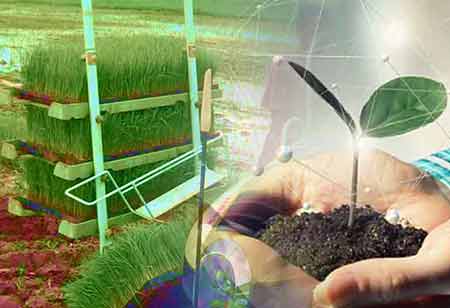Thank you for Subscribing to Agri Business Review Weekly Brief
Elements of a Controlled Environment Agriculture
Controlled environment agriculture is important to vertical farming as it integrates several

By
Agri Business Review | Wednesday, July 27, 2022
Stay ahead of the industry with exclusive feature stories on the top companies, expert insights and the latest news delivered straight to your inbox. Subscribe today.
Vertical farming is founded on controlled environment agriculture, in which cutting-edge technology is utilized to give ideal growing conditions for any crop. Vertical farming is prepared to reach new heights with the support of modern technologies like AI, machine learning, and the Internet of Things.
FREMONT, CA: Vertical farming is an increasingly famous cultivating crop within a vertical environment. In a vertical system, crops are grown in composed environments where every parameter affecting their growth is cautiously monitored and amended to their specific requirements.
The most efficient way to detail vertical farming is first to learn the technologies that enable it.
Controlled Environment Agriculture (CEA)
Controlled environment agriculture is important to vertical farming as it integrates several technologies to give plants the optimal environmental and growth terms. Vertical farming can generate fresh, pest-free crops using a controlled environment system. Vertical farms isolate plants from their surrounding environment, and staff takes precautions to avoid pest infestations that could harm the crops. Even if controlled environment systems are often linked with vertical agriculture, they can also be utilized in horizontal agriculture.
Smart sensors watch technical variables like temperature, carbon dioxide, oxygen, lighting, humidity, nutrient content, pH, pest control, watering, and harvesting in vertical farms. Controlled settings are often comprised of hydroponic, aeroponic, or aquatic agriculture. Moreover, controlled environment agriculture can use advanced imaging and sensor technology, for example, cameras and thermal imaging, to monitor plant growth, temperature, and other variables. Right now, controlled environment systems have been highly effective for growing leafy greens, herbs, microgreens, and vegetables, for instance, tomatoes, peppers, melons, and sweet corn.
Dosing systems
An automated dosing system is often used in vertical farming to feed fertilizers to the plants and check the nutrient solution. Automatic dosing systems continuously monitor the reservoir's nutrient concentrations, pH and EC values, and water temperature. Generally, the dosing system is connected to the nutrient source by peristaltic pumps that suction and dispense the needed nutrients into the reservoir.
Real-time pH and EC readings are taken from probes placed in the reservoir, and the dosing cycle is restarted as essential. With an automated dosing system, growers may have greater control over the fertilizer solution without spending notable time adjusting the pH, EC, nutrients, and temperatures. Also, plants receive an exact amount of nutrients, which avoids plant shock or stunted growth, frequently resulting from unbalanced growing circumstances.
Sterilization Techniques
Sanitation is required to promote plant growth and ensure international food safety laws comply. Vertical farming employs stringent sanitation and disinfection procedures to ensure pesticide-free crops are produced annually. Sterilization can be achieved in diverse ways, but the most frequently utilized are chemical disinfection, ultraviolet-C sterilization, and ozone sanitation.
Chemical sanitization
Chemicals like hypochlorite and hydrogen peroxide aid in sterilizing surfaces like floors, transport equipment, and harvesting clippers, which, if not cleaned properly, can readily spread disease from plant to plant.





